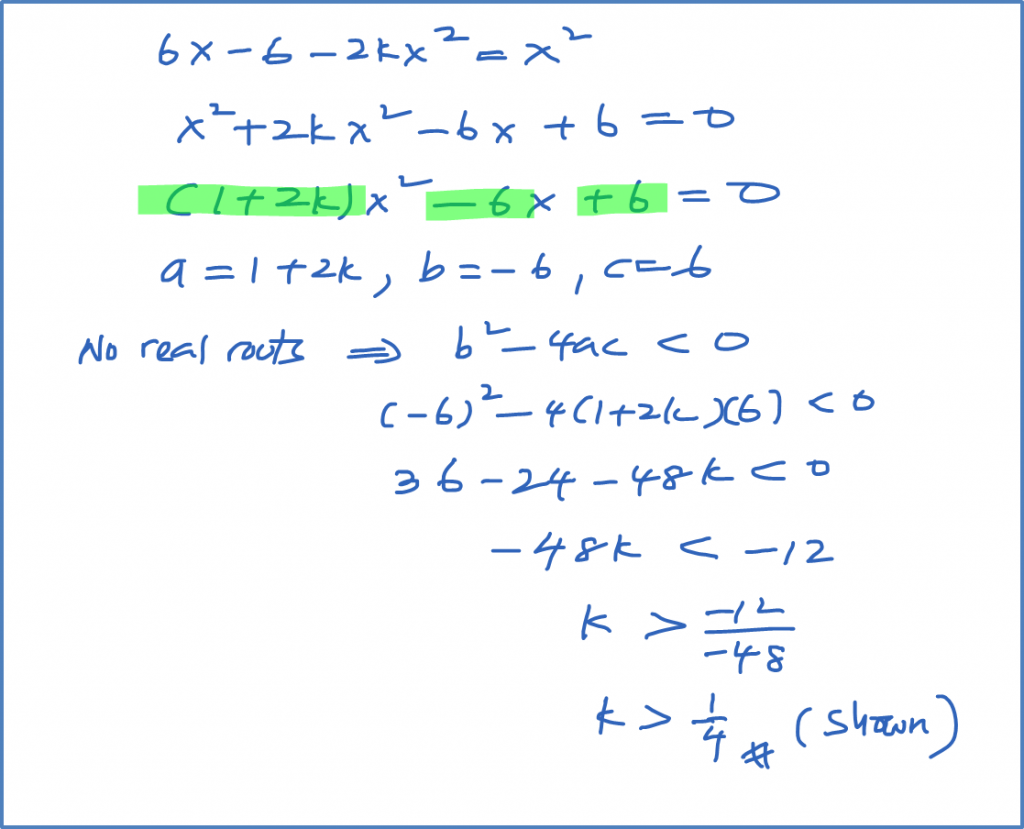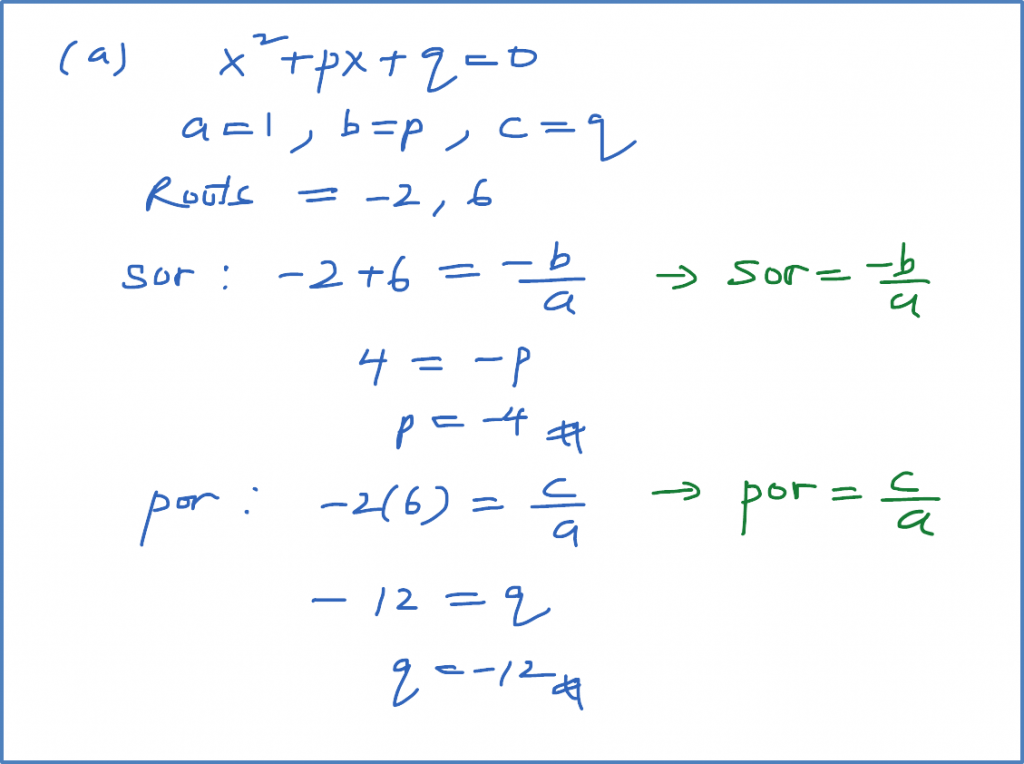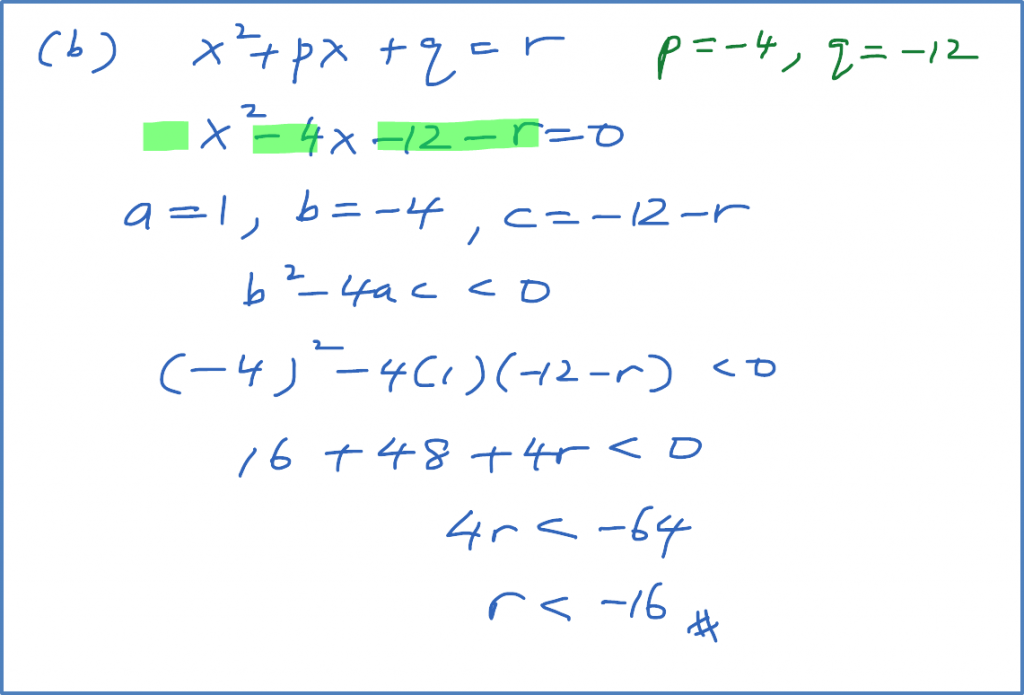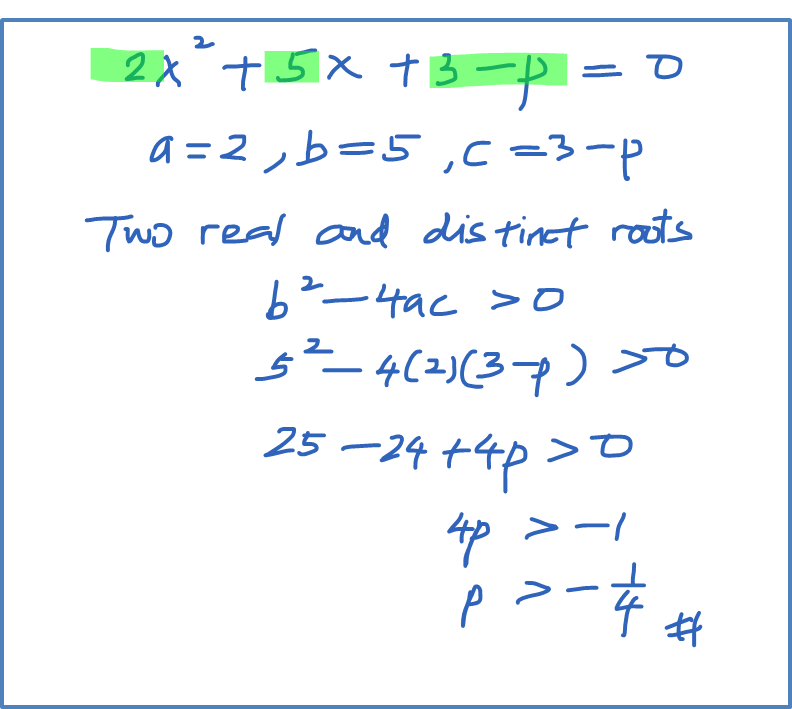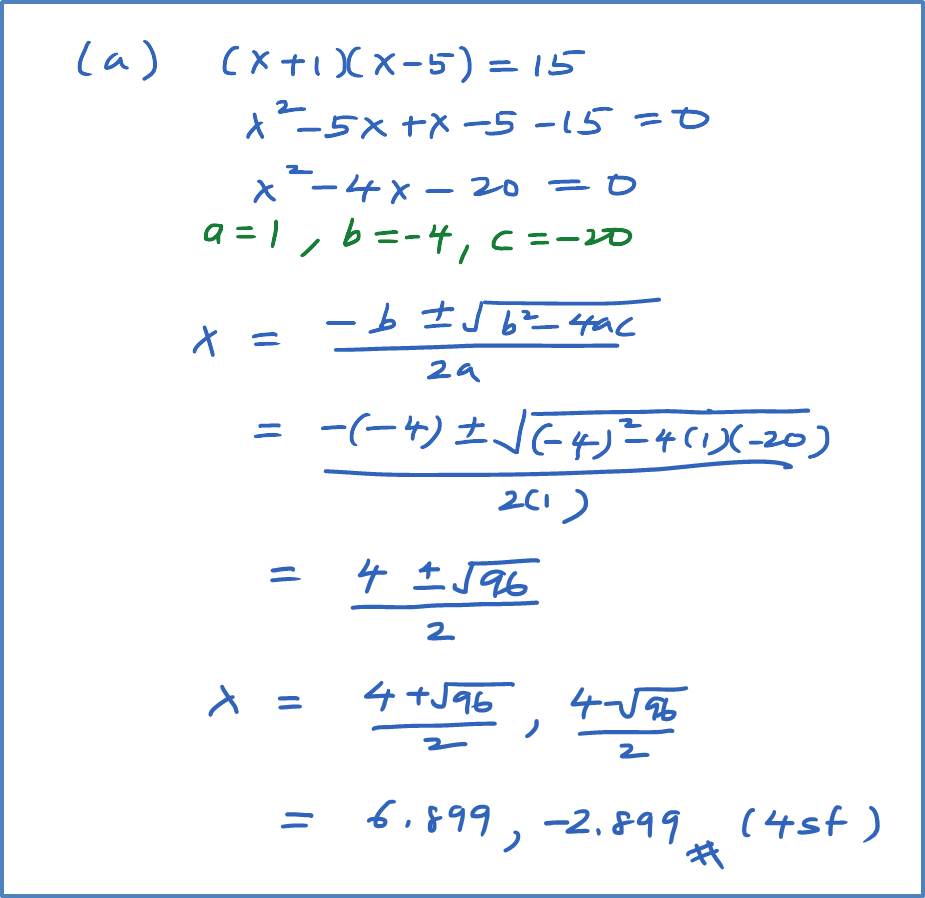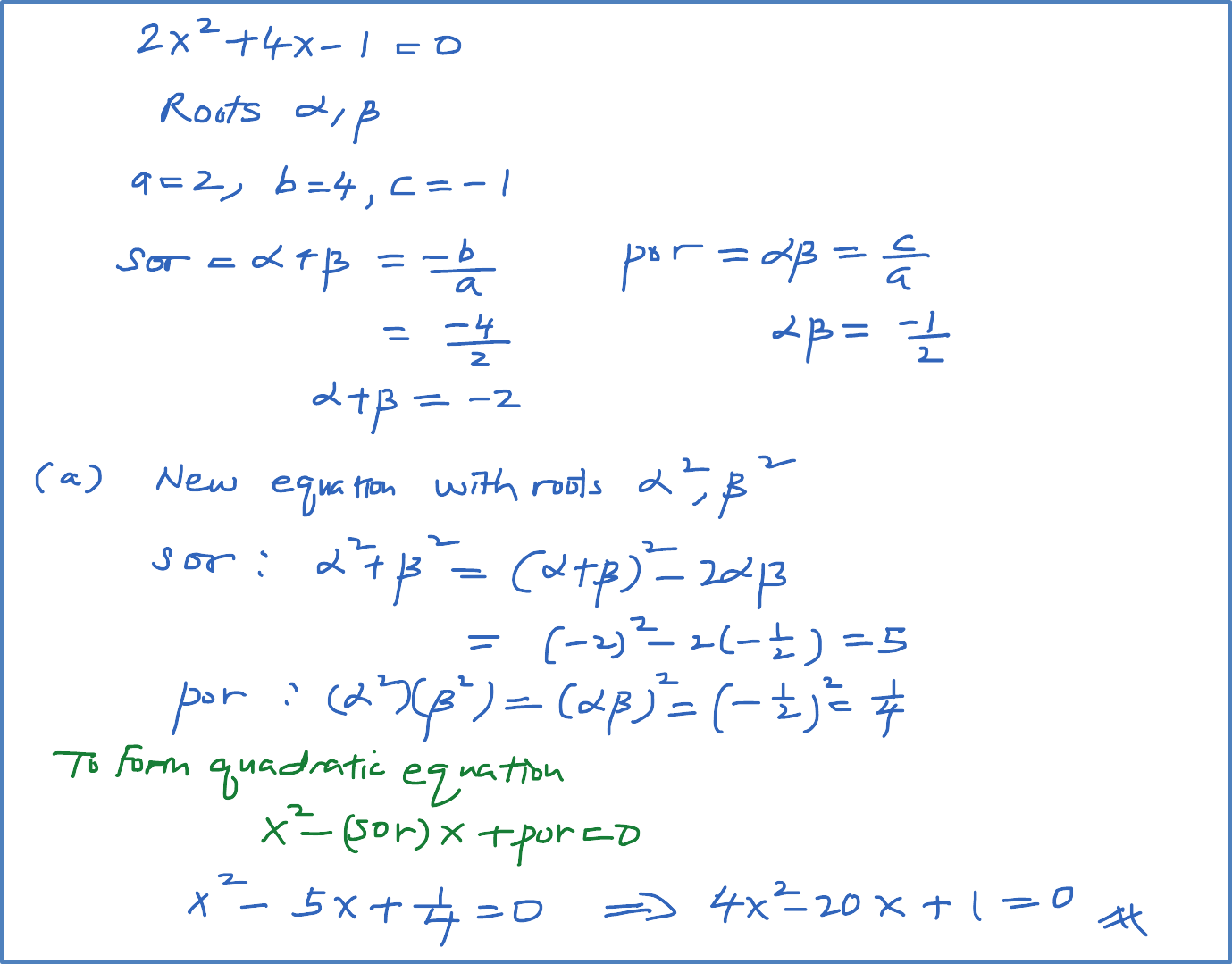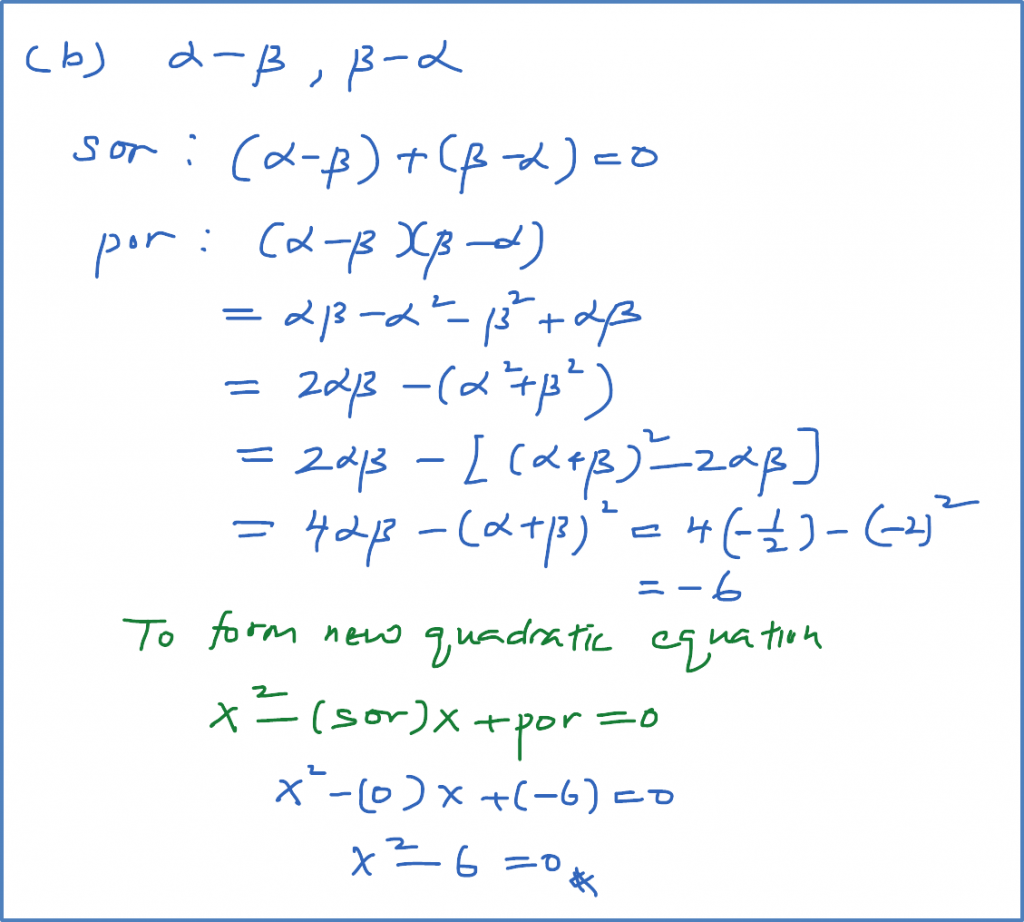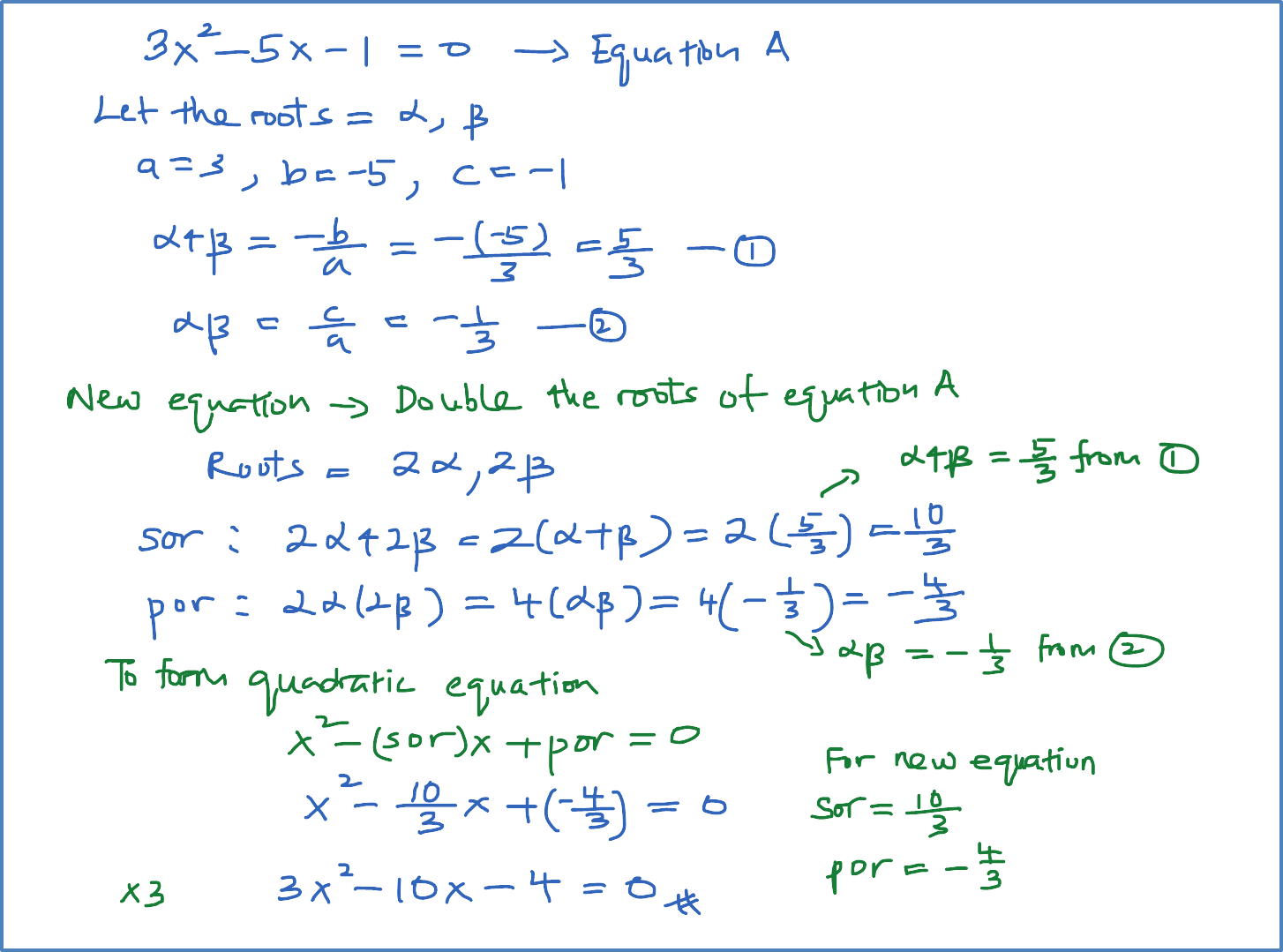Question 11:
Solve the following quadratic equation:
Solution:
Solve the following quadratic equation:
Solution:
Question 12:
Diagram above shows a rectangle ABCD.
(a) Express the area of ABCD in terms of n.
(b) Given the area of ABCD is 60 cm2, find the length of AB.
Solution:
(a)
Area of ABCD
= (n + 7) × n
= (n2+ 7n) cm2
(b)
Given the area of ABCD = 60
n2+ 7n = 60
n2+ 7n – 60 = 0
(n – 5) (n + 12) = 0
n = 5 or n = – 12 (not accepted)
When n = 5,
Length of AB = 5 + 7 = 12 cm
Question 13 (4 marks):
Solve the following quadratic equation:
Solution:
Solve the following quadratic equation:
Solution:

